
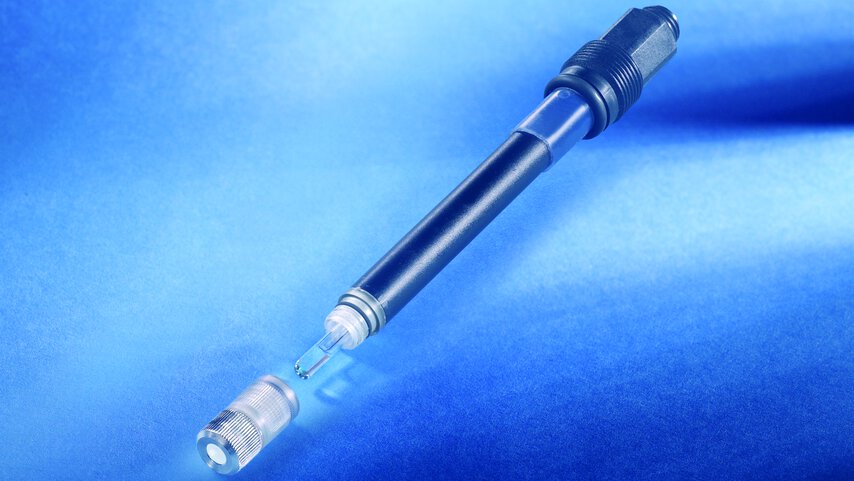
Ammonia detector - operation, construction, industrial application
If you are an engineer, you have surely come across ammonia at some point. It is a colourless gas that is used in a variety of applications such as refrigeration, fertilisers and even in the production of polymers. However, working with ammonia can be dangerous as it is toxic and flammable. In order to prevent any mishaps, it is necessary to monitor its concentration closely. And this is where the ammonia electrode comes to the rescue. In this blog, we will discuss what an ammonia electrode is, how it works and why it is crucial for industries that use ammonia.
Where is ammonia used in industry?
Ammonia has many uses in industry. It is used as an ingredient in the production of fertilisers, as well as in the manufacture of chemical products such as refrigerants, dyes, bleaches and cleaning agents. Ammonia is also used in the production of explosives, in petroleum refining and as an ingredient in gas mixtures for welding. One important use of ammonia is as a refrigerant in refrigeration systems, including air-conditioning systems, refrigerators, freezers and other refrigeration equipment.
Use of ammonia in refrigeration systems
Ammonia is a gas with good cooling properties, which is characterised by high efficiency and low operating costs. Thanks to these properties, it is widely used as a refrigerant in refrigeration systems, especially in large industrial systems in the food, pharmaceutical and chemical industries, among others, but also in the power generation industry.
In refrigeration systems, ammonia flows through a closed system of pipes, heat exchangers and compressors to extract heat from air or other substances and transport it to the refrigeration plant.
Hazards associated with ammonia
In refrigeration systems with ammonia, there is a risk of leakage of this gas, which, due to the toxic properties of the substance, poses a serious threat to human health and life. This gas can cause irritation of the respiratory tract, shortness of breath and, if exposed for a prolonged period of time, even death. In addition, ammonia can easily ignite on contact with air.

Diagram of an ammonia refrigeration plant
Ammonia leak detection methods - ammonia detectors
One of the most effective methods of detecting ammonia leaks is through the use of an ammonia detector. These devices work by detecting changes in the concentration of ammonia in liquids. When it exceeds a certain value, the detector gives an audible and/or light alarm. This allows for a quick response, which is crucial in the detection of toxic gases.
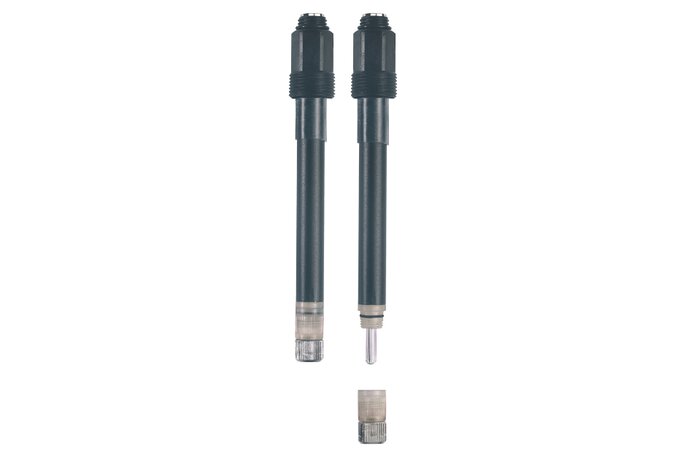
An ammonia detection probe is one of the most effective methods of detecting a leak of this poisonous gas.
JUMO ammonia detection probe
The JUMO ammonia electrode is a device that is used to detect ammonia leaks in liquid solutions in refrigeration plants and other places where this gas is used. The principle of the sensor is based on measuring the concentration of ammonia in the solution by changing the pH of the electrolyte, which is contained in the ammonia probe.
The construction of the sensor consists of a pH electrode and a reference electrode, placed in an electrolyte separated from the test medium by a PTFE membrane. When ammonia penetrates the membrane, it changes the pH of the electrolyte, which is measured by the pH electrode.
The dependence of pH on the concentration of ammonia in the solution is well documented and allows the precise detection of ammonia, which is particularly useful in the measurement of toxic gases. JUMO has used a special PTFE membrane as a moisture-protective element for the sensor, which ensures longer life and reliability.
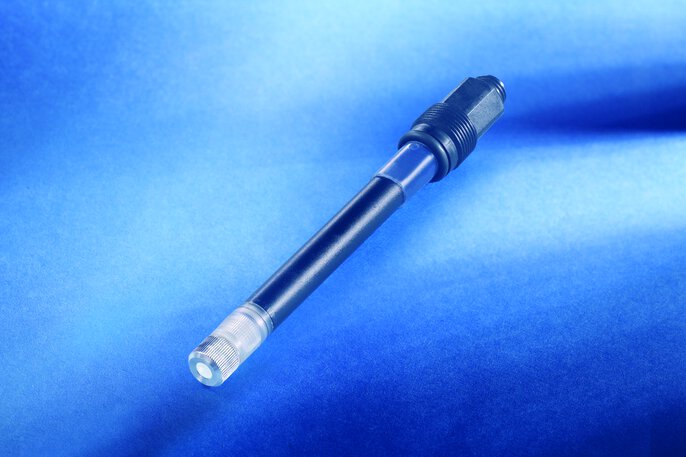
JUMO ammonia detectors can be used to measure the ammonia content of liquids in cold stores, laboratories and air-conditioning systems. In most applications, there is no need for an extensive system and this stand-alone combustible gas sensor is sufficient.
JUMO ammonia detector - advantages
The JUMO ammonia detector is a tool that enables the fast and reliable detection of ammonia leaks in various types of installations, including refrigeration plants. Compared to other measurement methods, the JUMO detector offers many advantages.
Detector design - simple membrane replacement
One of the biggest advantages of the JUMO ammonia detector is the simple replacement of the diaphragm, which allows a damaged diaphragm to be replaced quickly and easily without the need to visit a specialist. The JUMO detector is equipped with ready-made diaphragm caps, which are easy to fit without having to replace the entire detector and ensure reliability and measurement accuracy.
Can be used in various types of installation
Another important advantage of the JUMO ammonia detector is that it can be used in refrigeration plants and laboratory analysers. The JUMO detector allows fast and accurate detection of ammonia leaks, which is crucial for refrigeration plants where ammonia leakage can pose a serious threat to human health and life.
Accuracy
In addition, the JUMO ammonia electrode works on the principle of pH dependence on the concentration of ammonia in solution, allowing accurate and selective detection of ammonia, even at low concentrations. The PTFE membrane, which protects the sensor from moisture, also contributes to the accuracy of the measurements and to the durability and reliability of the detector.
In short, the JUMO ammonia detector offers a number of advantages, including simple membrane replacement, ready-made membrane caps, as well as the possibility to be used in different types of installations and laboratory analysers.
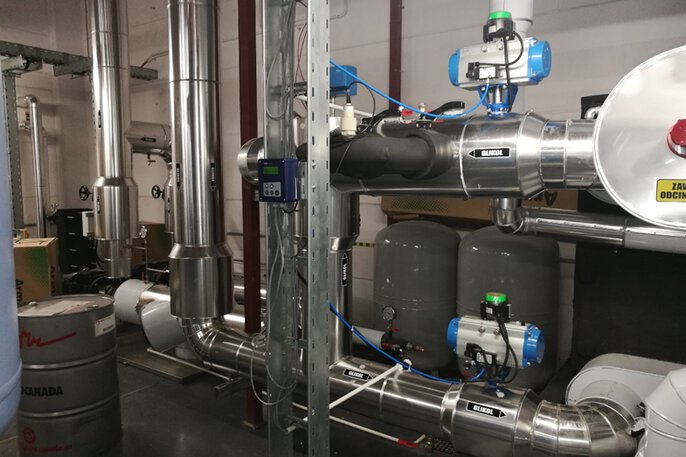
Example of use of the JUMO ammonia detector in an ammonia cold store. The detector measurement is displayed on the JUMO AQUIS 500 pH transmitter.
Ammonia probe - calibration
Maintenance and calibration of the ammonia electrode is also important. The sensor membrane can become clogged or contaminated, leading to inaccurate results. To prevent this, frequent calibration and cleaning of the ammonia electrode is necessary. The calibration process involves immersing the ammonia electrode in a standard solution of known concentration and adjusting the instrument to reflect the correct values.
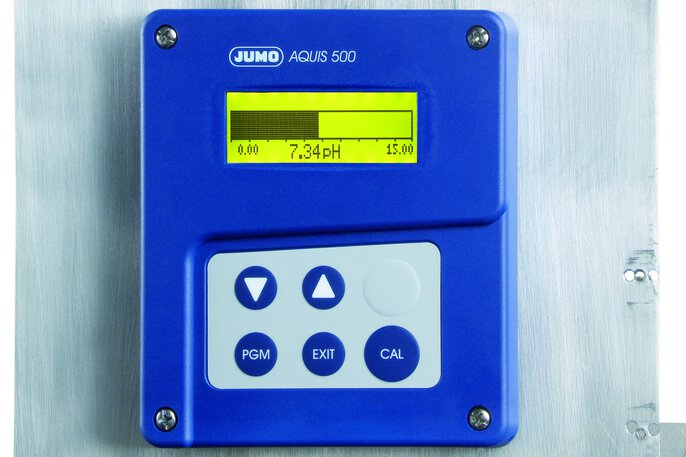
The JUMO AQUIS 500 pH transmitter/regulator for pH, redox and ammonia values works well with the JUMO ammonia detector. The instrument must have the appropriate control capabilities
Ammonia detector - summary
The JUMO toxic gas detector is an effective tool for detecting ammonia leaks, which is often used in refrigeration plants. The principle of this sensor is to measure the change in pH of the electrolyte caused by the diffusion of ammonia through a hydrophobic membrane. The PTFE membrane effectively protects the sensor from moisture, which contributes to its long-term and reliable operation.
One of the biggest advantages of the JUMO ammonia detector is the simple replacement of the membrane, as well as the ready-made membrane caps. This makes the use of this device convenient and requires no specialist skills. The JUMO ammonia detector is not only used in refrigeration plants, but also in laboratory analysers.
When using the JUMO ammonia detector in refrigeration plants, regular maintenance and inspection must be kept in mind in order to maintain its efficiency and effectiveness. If an ammonia leak is detected, appropriate measures must be taken immediately to avoid risks to human and animal health and life.
- ${title}${badge}

